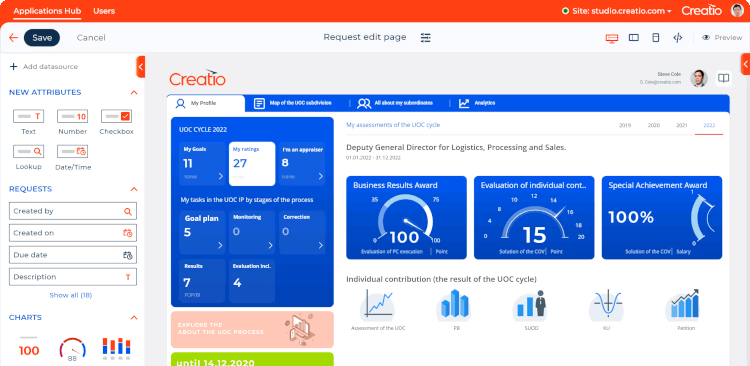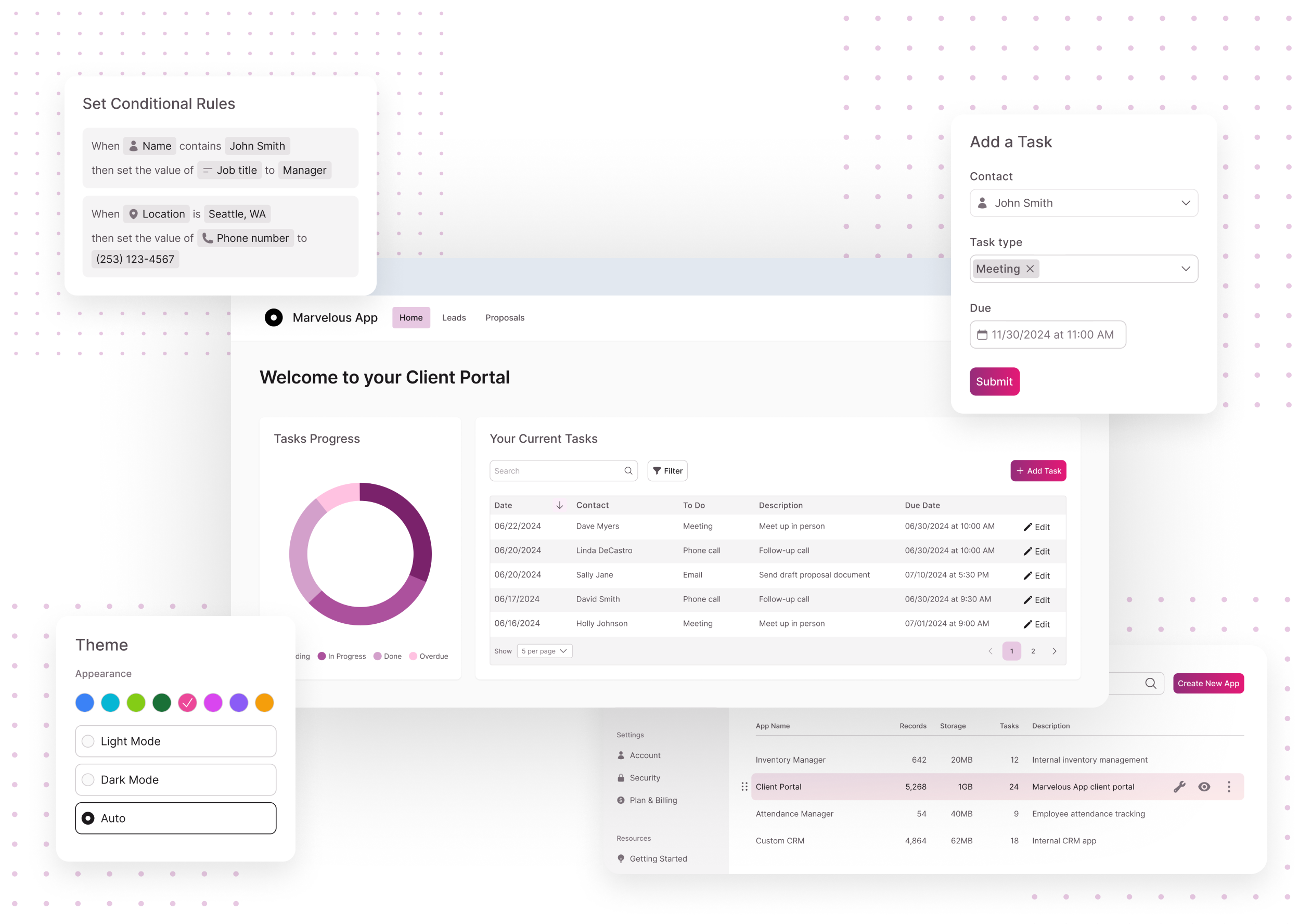No-Code Operating Systems for Open System Database Development: Conserve Time and Resources
No-Code Operating Systems for Open System Database Development: Conserve Time and Resources
Blog Article
A Comprehensive Overview to Implementing Scalable Data Sources Without the Demand for Coding Experience
In the modern landscape of data monitoring, the capability to execute scalable databases without coding knowledge is ending up being significantly crucial for companies of all sizes. This overview intends to brighten the procedure, concentrating on user-friendly tools and user-friendly interfaces that demystify data source arrangement. By checking out vital features, reliable strategies for execution, and best methods for recurring management, we will certainly address how even non-technical users can confidently browse this facility surface. What are the critical elements that can really empower these individuals to take advantage of scalable data sources effectively? The answers may redefine your technique to data administration.
Comprehending Scalable Databases
In the realm of modern-day information administration, scalable databases have actually emerged as an essential option for companies seeking to handle increasing quantities of info effectively. These data sources are designed to suit development by enabling for the smooth addition of sources, whether through straight scaling (including extra devices) or vertical scaling (updating existing devices) This adaptability is crucial in today's busy electronic landscape, where data is produced at an unmatched rate.
Scalable data sources typically utilize dispersed architectures, which allow information to be spread across several nodes. This distribution not only enhances performance however also gives redundancy, guaranteeing information accessibility also in the event of equipment failures. Scalability can be a vital element for different applications, consisting of ecommerce platforms, social media networks, and large data analytics, where individual need can fluctuate considerably.
Additionally, scalable databases usually feature robust data consistency versions that stabilize efficiency and reliability. Organizations must consider their particular requirements, such as read and compose speeds, information integrity, and fault tolerance when selecting a scalable database remedy. Inevitably, recognizing the underlying principles of scalable data sources is essential for companies aiming to grow in a significantly data-driven world.
Key Attributes to Search For
When reviewing scalable databases, numerous crucial attributes are critical to making sure optimum performance and integrity. Firstly, consider the style of the data source. A distributed architecture can enhance scalability by enabling information to be saved across numerous nodes, assisting in smooth information access and processing as demand increases.
An additional essential function is data dividing, which enables reliable administration of huge datasets by separating them right into smaller sized, extra workable items (no-code). This approach not only boosts performance yet likewise streamlines source allowance
In addition, look for robust replication abilities. This attribute ensures information redundancy and high availability, decreasing downtime throughout upkeep or unexpected failures.
Performance monitoring tools are also important, as they give real-time understandings into system health and wellness and operational efficiency, enabling prompt modifications to preserve optimal performance.

User-Friendly Data Source Equipment
Simpleness is a crucial component in the design of easy to use data source tools, as it boosts access for users with differing levels of technological experience. no-code. These devices focus on intuitive user interfaces, allowing customers to create, manage, and question data sources without needing comprehensive programming knowledge
Trick attributes typically include drag-and-drop capability, visual data modeling, and pre-built themes that streamline the arrangement procedure. Such tools typically use directed tutorials or onboarding procedures that assist in individual interaction and decrease the learning contour. Furthermore, seamless assimilation with prominent information resources and solutions guarantees view website that individuals can easily import and export information, even more streamlining operations.

Moreover, robust assistance and neighborhood resources, such as discussion forums and documentation, boost the customer experience by giving aid when needed. On the whole, straightforward data source devices encourage companies to harness the power of scalable databases, making information management accessible to everyone included.
Step-by-Step Application Overview
How can organizations efficiently implement scalable data sources to meet their expanding information needs? The process starts with recognizing specific information demands, including the volume, selection, and speed of data that will be processed. Next off, organizations ought to review user-friendly data source tools that supply scalability attributes, such as cloud-based services or managed database services.
Once the best tool is selected, the next step involves configuring the data source atmosphere. This includes setting up instances, specifying customer consents, and establishing data frameworks that straighten with organization goals. Organizations must then move existing information into the new system, making sure information stability and marginal interruption to operations.
Post-migration, performing thorough testing is essential; this consists of performance testing under numerous tons conditions to make sure the system can take care of future development - no-code. Additionally, it is vital to train staff on the data source administration user interface to help with seamless use
Best Practices for Monitoring
Efficient management of scalable data sources needs a strategic technique that focuses on recurring tracking and optimization. click here to read To attain this, companies should execute robust surveillance tools that supply real-time understandings into data source performance metrics, such as inquiry feedback times, source use, and deal throughput. Routinely assessing these metrics can aid identify traffic jams and locations for renovation.

Regular backups and calamity recovery strategies are necessary to safeguard data integrity and schedule. Establishing a regular for examining these back-ups will make certain a trusted recuperation process in instance of an unanticipated failing.
Moreover, performance tuning ought to be a continuous process. Changing indexing techniques, optimizing questions, and scaling resourcesâEUR" whether vertically or horizontallyâEUR" will certainly assist keep optimum performance as usage demands progress.
Finally, cultivating a society of knowledge sharing amongst staff member will enable continual learning and adjustment, making certain that the monitoring of scalable data sources remains effective and reliable over time.
Final Thought
To conclude, the application of scalable data sources can be effectively attained without coding expertise through the application of user-friendly user interfaces and user-friendly devices. By adhering to the outlined approaches for configuration, data movement, and efficiency testing, individuals can navigate the intricacies of database management easily. Emphasizing best methods for recurring maintenance and partnership additional enhances the capability to handle scalable databases effectively in a quickly progressing data-driven atmosphere.
In the modern landscape of data monitoring, the ability to execute scalable databases without coding proficiency is ending up being progressively essential for companies of all sizes.In the realm of modern information monitoring, scalable data sources have arised as a vital service for organizations looking for to manage enhancing volumes of info successfully.Furthermore, scalable databases typically include durable information consistency versions that balance performance and integrity.Just how can companies successfully carry out scalable databases to satisfy their growing data needs? Next, companies must examine straightforward data source devices that provide scalability attributes, such as cloud-based solutions or took care of data source solutions.
Report this page